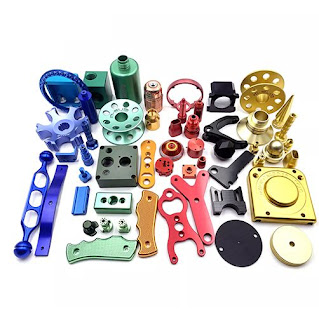Understanding the Basics of CNC Lathe Machines: Operation and Applications
CNC (Computer Numerical Control) lathe machines are powerful tools used in the manufacturing industry for a wide range of applications. Whether you're a newcomer to CNC lathe machines or seeking to expand your knowledge, this article will provide a solid understanding of their operation and explore their various applications.
How CNC Lathe Machines Work
CNC lathe machines operate using a combination of computer programming and automation. The process begins with a pre-programmed design or blueprint, which is translated into machine-readable instructions. These instructions, often written in G-code, control the movements and actions of the machine. The CNC controller interprets the code and coordinates the machine's components to execute precise cutting operations.
Key Components of CNC Lathe Machines
CNC lathe machines consist of several essential components, each playing a crucial role in the overall operation:
a. Bed: The bed provides a stable base for the machine and supports other components.
b. Headstock: The headstock houses the main spindle, which rotates the workpiece.
c. Chuck: The chuck is used to hold and secure the workpiece during machining.
d. Tool Turret: The tool turret holds various cutting tools that are automatically selected and positioned during machining.
e. Tailstock: The tailstock provides support for long workpieces and may include a center for additional stability.
f. CNC Controller: The CNC controller is the "brain" of the machine, interpreting the program instructions and coordinating the machine's movements.
Machining Operations with CNC Lathe Machines
CNC lathe machines can perform a range of machining operations, including:
a. Turning: This operation involves removing material from the rotating workpiece to create cylindrical shapes, such as shafts or cylinders.
b. Facing: Facing is the process of cutting a flat surface perpendicular to the axis of rotation, creating a smooth and even finish.
c. Drilling: CNC lathes can perform drilling operations to create holes in the workpiece.
d. Tapering: Tapering involves gradually reducing the diameter of the workpiece, creating conical or tapered shapes.
e. Threading: CNC lathes can cut threads on the workpiece, producing precise and accurate threads of various sizes and pitches.
Applications of CNC Lathe Machines
CNC machines find application in a diverse range of industries, including:
a. Automotive: CNC lathes are used to manufacture engine components, shafts, and various automotive parts.
b. Aerospace: CNC lathe machines play a crucial role in the production of aerospace components, such as turbine blades and landing gear parts.
c. Medical: Precision parts for medical devices and implants are often produced using CNC lathe machines.
d. Electronics: CNC lathes are used in the manufacturing of electronic components, connectors, and precision parts for circuit boards.
e. General Manufacturing: CNC lathe machines are widely utilized in general manufacturing for creating a variety of components used in different industries.
Advantages of CNC Lathe Machines
CNC lathe machines offer numerous advantages over conventional lathe machines:
a. Precision and Accuracy: CNC lathe machines provide exceptional precision, ensuring consistent and accurate results.
b. Automation and Efficiency: The automated nature of CNC lathe machines allows for increased productivity and reduced labor requirements.
c. Versatility: CNC lathe machines can handle a wide range of workpiece sizes and shapes, making them highly versatile in manufacturing processes.
d. Time and Cost Savings: CNC lathe machines can significantly reduce machining time and eliminate human errors, resulting in cost savings and improved efficiency.
e. Complex Operations: CNC lathe machines can perform complex machining operations with high precision and repeatability.
In conclusion, understanding the basics of CNC lathe machines is essential for anyone involved in manufacturing or machining processes. By grasping the fundamentals of their operation, key components, common machining operations, applications, and advantages, you can appreciate the power and versatility of CNC lathe machines and explore their potential in various industries. More details please contact Leichman


评论
发表评论